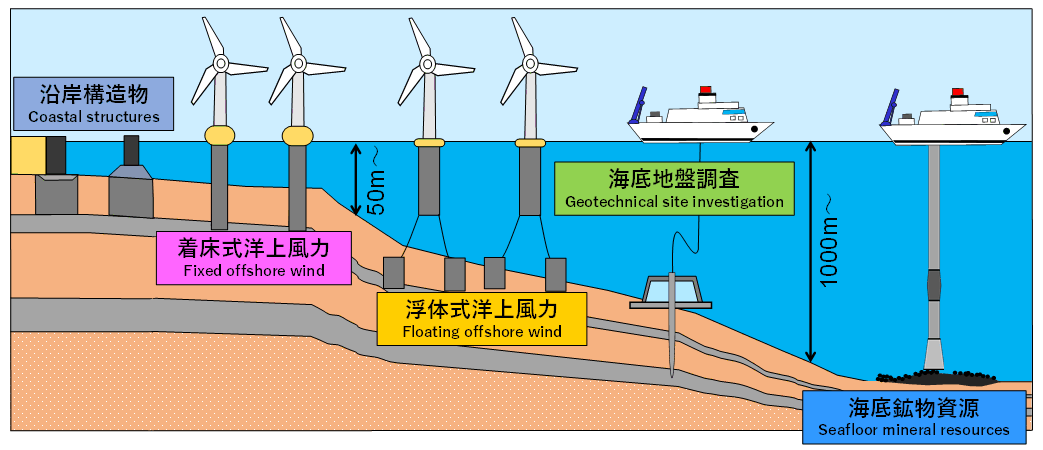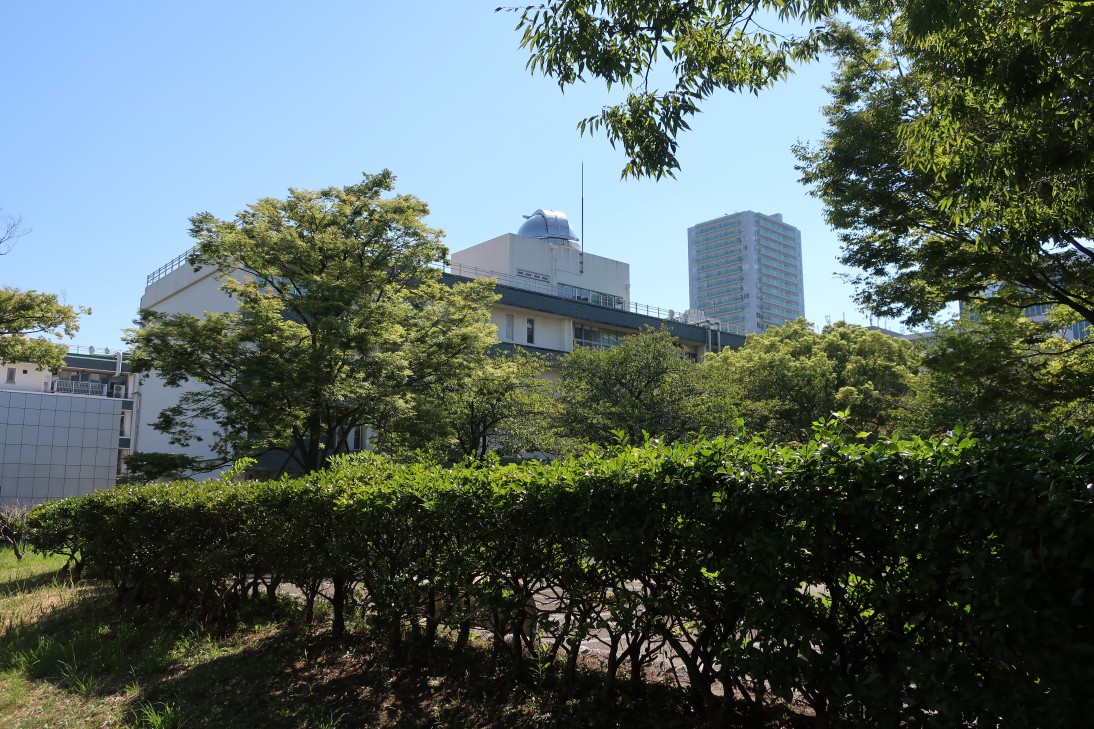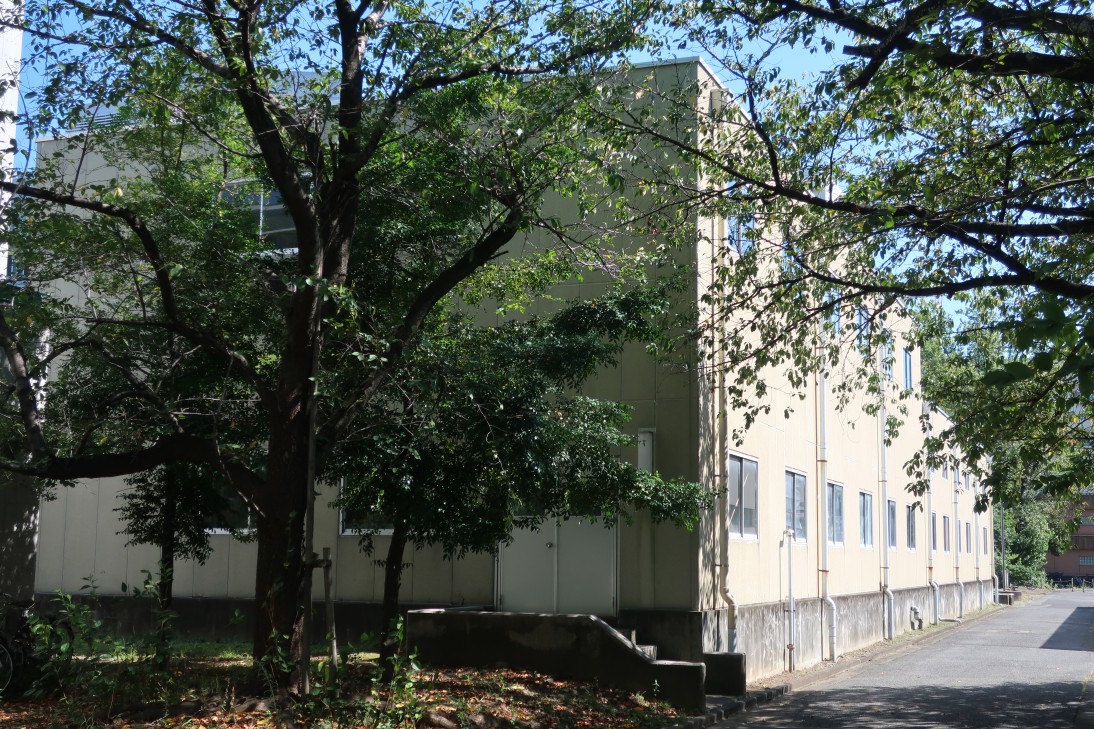海洋地盤工学研究室 Marine Geotechnics Laboratory
当研究室は,2015年に谷和夫先生が本学に着任した際に開設された研究室です。研究対象領域は沿岸域(Nearshore)から沖合(Offshore)と広く,海底地盤に関する工学的な諸問題について研究しています。石油やガス,鉱物などの海底資源開発や洋上風力・海底ケーブルなどの構造物の建設などは,世界的には大きな産業となっており,地盤工学分野でもOffshore geotechnicsとして多くの研究者や技術者が活躍しています。一方,日本では海洋を対象とした地盤工学の研究者や技術者は少なく,我々がそのパイオニアとなれるように研究を進めています。また,地盤工学だけに留まらず,流体との相互作用や地盤の流体的挙動についても研究しており,分野横断研究にも取り組んでいます。
Our laboratory was established in 2015 when Professor Kazuo Tani joined Tokyo University of Marine Science and Technology. We conduct research on a wide range of geotechnical issues related to the seafloor, spanning from nearshore to offshore environments. Globally, offshore resource development—including oil, gas, and minerals—as well as the construction of offshore wind turbines and subsea cables, has grown into a major industry. In the field of geotechnical engineering, many researchers and engineers are actively engaged in what is known as offshore geotechnics. In contrast, Japan has relatively few specialists in geotechnical engineering focused on marine environments. We aim to become pioneers in this field through our research. In addition to geotechnics, we also study fluid–soil interactions and the hydrodynamic behavior of seabed materials, engaging in interdisciplinary research that bridges geotechnical engineering and fluid mechanics.

当研究室を志望する方へ To Prospective Students of Our Laboratory
海洋地盤工学研究室(大学内での通称,地盤研)では,教員ごとの研究室単位ではなく,高橋研究室と野村研究室が合同でグループとして活動・行事を行っています。合計で15~20名ほどの教員・研究員・学生で活動しています。また,沿岸域工学研究室(大学内での通称,沿岸研)とも協力し,実験室や学生室を共有したり,合同でゼミや行事を行ったりもしています。様々な教員や学生とふれあいながら研究室生活を過ごすことが出来ます。基本的に,大学院の先輩とチームを組み,それぞれの分担を決めて協力しながら研究を進めていきます。また,模型実験と数値解析,現場実験を研究ツールとし,他機関の大型実験施設も利用します。
At the Marine Geotechnics Laboratory (commonly referred to as 'Jibanken'), activities and events are organized not by individual faculty labs, but as a joint group comprising the Takahashi Lab and the Nomura Lab. Together, approximately 15-20 members—including faculty, researchers, and students—collaborate in research and lab life. We also work closely with the Coastal Engineering Laboratory (named as 'Enganken'), sharing experimental and student spaces, and holding joint seminars and events. This collaborative environment allows students to interact with a diverse group of faculty and peers. Graduate students typically form teams with junior members, assigning roles and working together to advance their research. Our research tools include physical modeling, numerical analysis, and field experiments, and we also make use of large-scale experimental facilities at external institutions.
研究室の概要パンフレット Laboratory Overview Brochure


